Considering distortion product otoacoustic emission fine structure in measurements of the medial olivocochlear reflex
- PMID: 19275316
- PMCID: PMC2736726
- DOI: 10.1121/1.3068442
Considering distortion product otoacoustic emission fine structure in measurements of the medial olivocochlear reflex
Abstract
In humans, when the medial olivocochlear (MOC) pathway is activated by noise in the opposite ear, changes in distortion product otoacoustic emission (DPOAE) level, i.e., the MOC reflex, can be recorded in the test ear. Recent evidence suggests that DPOAE frequency influences the direction (suppression/enhancement) of the reflex. In this study, DPOAEs were recorded at fine frequency intervals from 500 to 2500 Hz, with and without contralateral acoustic stimulation (CAS) in a group of 15 adults. The MOC reflex was calculated only at DPOAE frequencies corresponding to peaks in the fine structure. Additionally, inverse fast-Fourier transform was conducted to evaluate MOC effects on individual DPOAE components. Results show the following: (1) When considering peaks only, the mean MOC reflex was -2.05 dB and 97% of observations reflected suppression, (2) CAS reduced distortion characteristic frequency component levels more than overlap component levels, and (3) CAS produced an upward shift in fine structure peak frequency. Results indicate that when the MOC reflex is recorded at DPOAE frequencies corresponding to fine structure maxima (i.e., when DPOAE components are constructive and in phase), suppression is reliably observed and level enhancement, which probably reflects component mixing in the ear canal rather than strength of the MOC reflex, is eliminated.
Figures


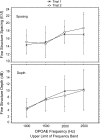
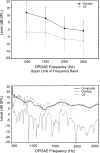
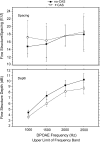
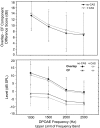


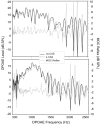

References
-
- Agrama, M. T., Waxman, G. M., Stagner, B. B., Martin, G. K., and Lonsbury-Martin, B. L. (1998). “Effects of efferent activation on distortion-product otoacoustic emissions in normal humans using ipsilateral acoustic stimulation,” 21st Annual Midwinter Meeting of the Association for Research in Otolaryngology, Abstract 605.
Publication types
MeSH terms
Grants and funding
LinkOut - more resources
Full Text Sources
Miscellaneous

